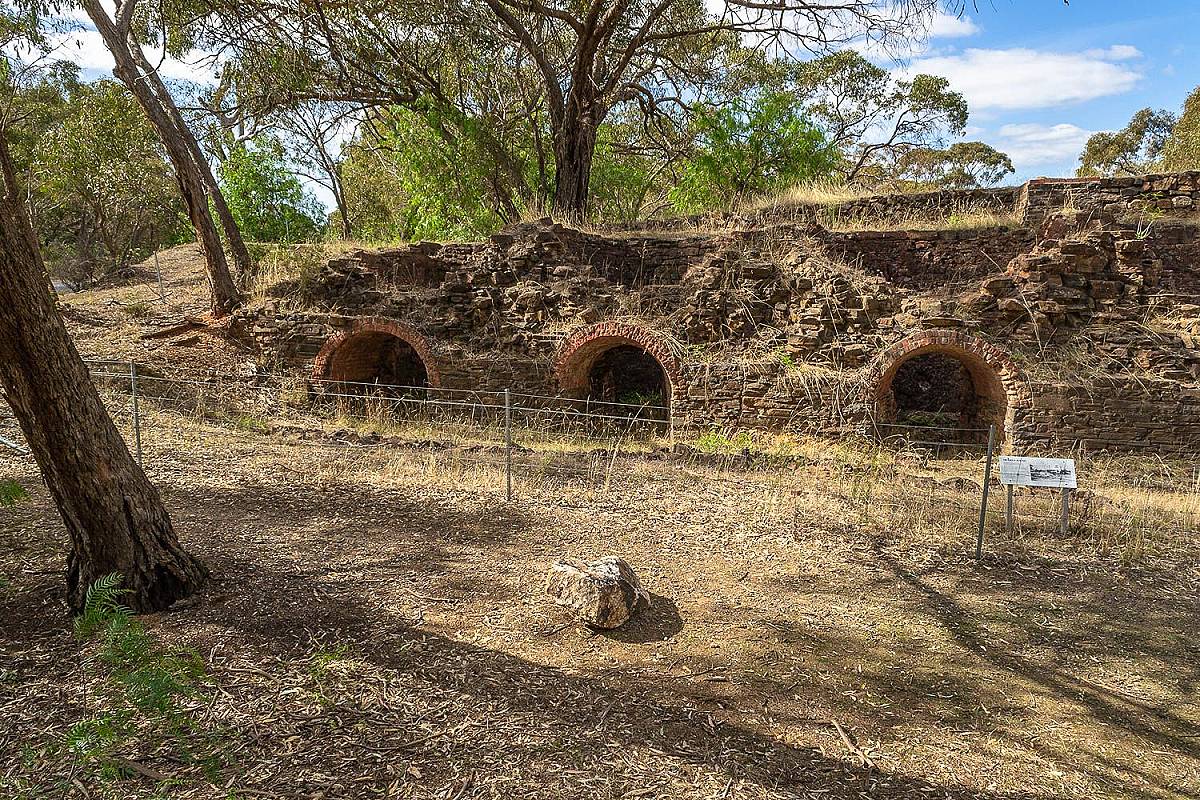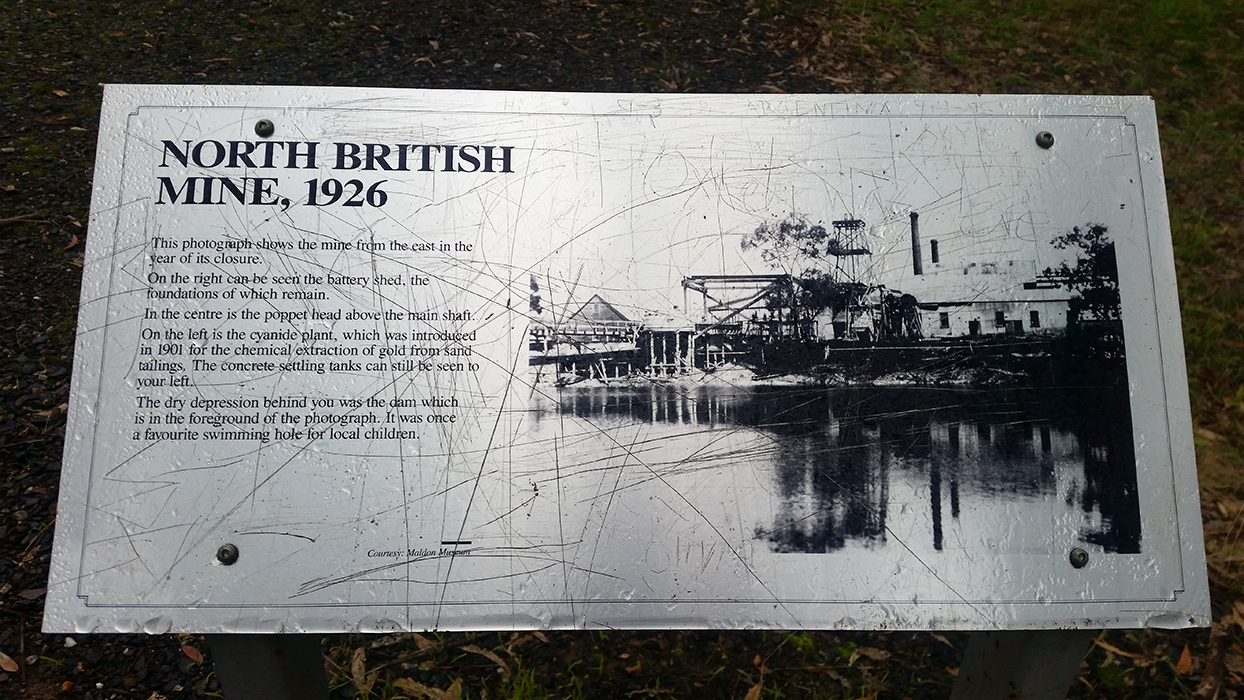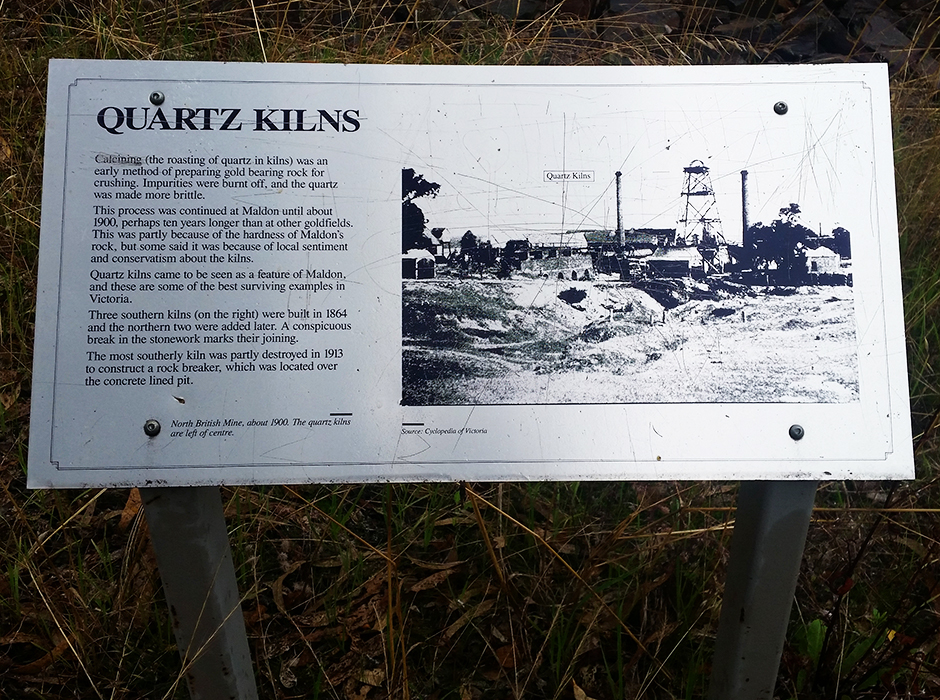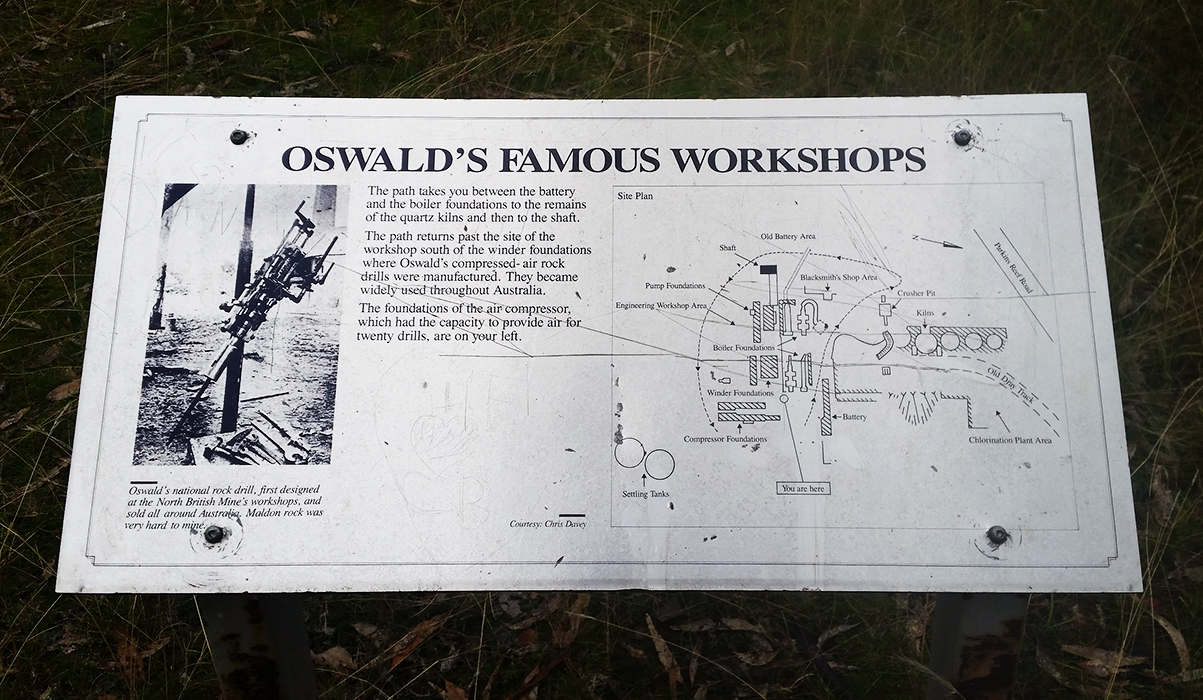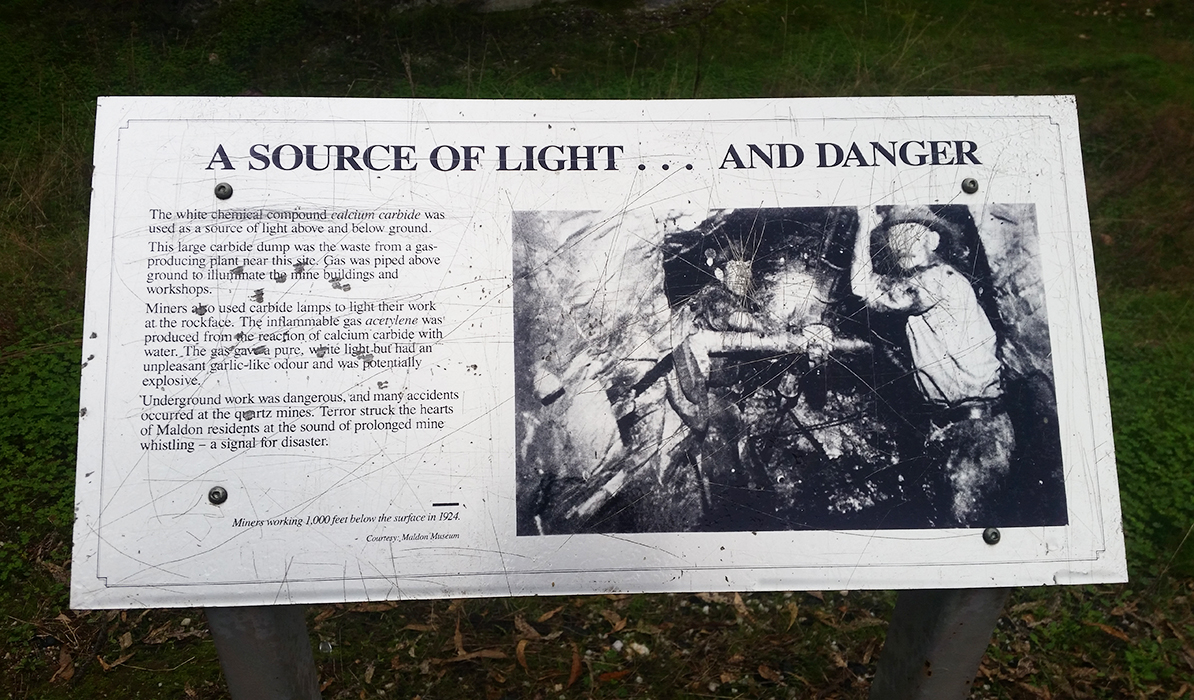Take a self guided tour to explore the fascinating and extensive ruins of the North British Mine and Quartz Kilns in Maldon.
The walk showcases the mine's machinery foundations, large mine shaft, and well-preserved quartz kilns.
Seen as a feature of Maldon's mining history, quartz kilns were used to roast quartz in preparation for crushing as it burnt off impurities and made the rock more brittle.
The kilns at the North British Mine site are an excellent example of early mining techniques in Maldon, and are some of the best surviving quartz kilns in Victoria.
Picnics at the North British Mine and Quartz Kilns
A large, shady picnic area is situated alongside the car park.
Here you will find multiple picnic tables spread out between the trees on a grassy lawn, several wood fire barbecues, a water tap, a toilet block and an information board.
Walking tracks at the North British Mine and Quartz Kilns
There are two walking tracks from the picnic area.
- Parkins Reef Circuit Walk (2.3km return)
- Short self-guided tour which takes you through the ruins of the North British Mine and ends at the Quartz Kilns.
Why did gold miners roast their quartz?
The roasting of ore is an ancient technique, and was brought to the Victorian Goldfields by migrant miners. In the above video we're going to take a closer look at the process of quartz roasting, checking out some very cool places along the way. You can also
view this video over on YouTube.
More information
The following text is displayed on information signs at the North British Mine in Maldon:
NORTH BRITISH MINE, 1926
This photograph shows the mine from the east in the year of its closure.
On the right can be seen the battery shed, the foundations of which remain.
In the centre is the poppet head above the main shaft.
On the left is the cyanide plant, which was introduced in 1901 for the chemical extraction of gold from sand tailings. The concrete settling tanks can still be seen to your left.
The dry depression behind you was the dam which is in the foreground of the photograph. It was once a favourite swimming hole for local children.
QUARTZ KILNS
Calcining (the roasting of quartz in kilns) was an early method of preparing gold bearing rock for crushing. Impurities were burnt off, and the quartz was made more brittle.
This process was continued at Maldon until about 1900, perhaps ten years longer than at other goldfields. This was partly because of the hardness of Maldon's rock, but some said it was because of local sentiment and conservatism about the kilns.
Quartz kilns came to be seen as a feature of Maldon, and these are some of the best surviving examples in Victoria.
Three southern kilns (on the right) were built in 1864 and the northern two were added later. A conspicuous break in the stonework marks their joining.
The most southerly kiln was partly destroyed in 1913 to construct a rock breaker, which was located over the concrete lined pit.
OSWALD'S FAMOUS WORKSHOPS
The path takes you between the battery and the boiler foundations to the remains of the quartz kilns and then to the shaft.
The path returns past the site of the workshop south of the winder foundations where Oswald's compressed air rock drills were manufactured. They became widely used throughout Australia.
The foundations of the air compressor, which had the capacity to provide air for twenty drills, are on your left.
A SOURCE OF LIGHT ... AND DANGER
The white chemical compound calcium carbide was used as a source of light above and below ground.
This large carbide dump was the waste from a gas-producing plant near this site. Gas was piped above ground to illuminate the mine buildings and workshops.
Miners also used carbide lamps to light their work at the rockface. The inflammable gas acetylene was produced from the reaction of calcium carbide with water. The gas gave a pure, white light but had an unpleasant garlic-like odour and was potentially explosive.
Underground work was dangerous, and many accidents occurred at the quartz mines. Terror struck the hearts of Maldon residents at the sound of prolonged mine whistling - a signal for disaster.
More to explore nearby
- There are other set of quartz kilns a short drive away, the Grand Junction Quartz Kilns and the Caledonian Quartz Kilns.
- Other interesting sites throughout Maldon include the Beehive Mine, Maldon State Battery, Mount Tarrengower Lookout Tower, Rock of Ages, Darky's Hut, Charlie Fox's House, Lone Grave of Mother and Child, Child's Grave, Anzac Hill, Maldon Gardens Playground, Mt Tarrengower Tunnelling Company, Porcupine Flat Gold Dredge and Dragline, Union Hill Gold Mine Lookout, and Whim Platform.
- Things to do in Maldon
- 10 fascinating things about Maldon
- Gold prospecting in the Victorian Goldfields
- Gold prospecting guide for Castlemaine
- Best free campgrounds near Castlemaine
PROSPECTORS AND MINERS ASSOCIATION VICTORIA
Established in 1980, the Prospectors and Miners Association of Victoria is a voluntary body created to protect the rights and opportunities of those who wish to prospect, fossick or mine in the State of Victoria, Australia.
You can support the PMAV in their fight to uphold these rights by
becoming a member. You'll also gain access to exclusive publications, field days, prospecting tips, discounts and competitions.
